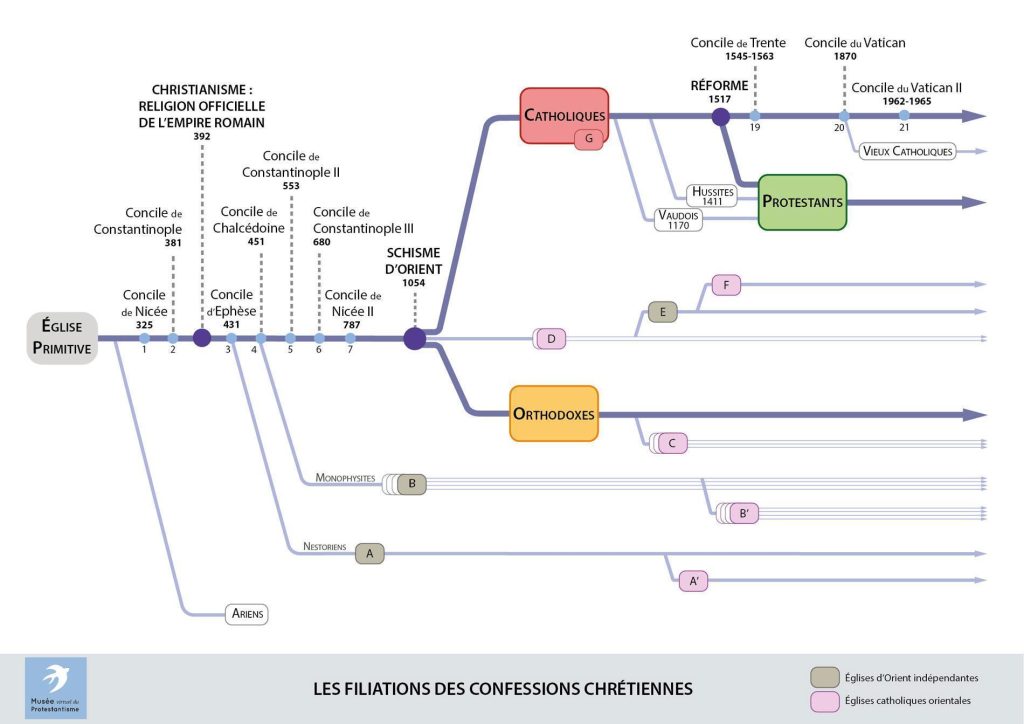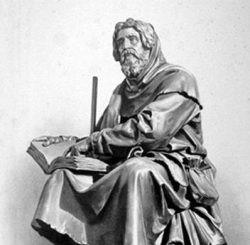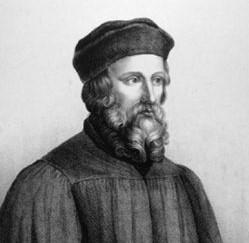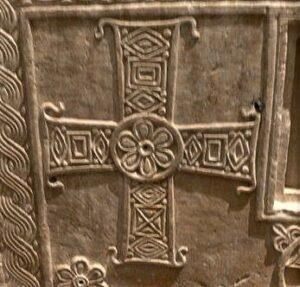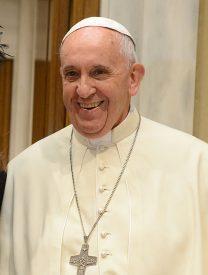Birth of Christianity
Early Christian communities were born in Palestine after the death of Jesus Christ among Jews who
acknowledged him as the Messiah. Christianity progressively spread all over the Roman Empire, and then farther away.
Based on the message of a man delivered by the Gospels, on rites, such as baptism, mass, communion, and on creeds, Christianity experienced doctrinal crises that deeply divided it.
Divisions of Christianity
The creeds of Christianity are matters for Doctrinal debates: ecumenical councils are held with a view to settling the disputes, and to giving more precise definitions of dogmas while condemning heresies.
Even when they shared the same beliefs, Christians had different religious observances depending on their language, their country and their traditions.
From the divisions three great branches of Christianity developped: Orthodox, Catholic and Protestant. In 1054 the East-West schism separated the Orthodox from the Catholics; in 1517 the Reformation gave birth to Protestantism.
But in fact there were many more divisions, as the diagram of Christian denominations clearly shows. With time some Churches separated, whilst others merged: the Oriental Catholic Churches – often called ‘Uniates’, rallied to the Catholic Church at various times; Waldenses and Hussite trends joined the Protestant Reformation in the early 16th century…
The Christian diversity, still prevalent today, is especially obvious in the Middle East where Patriarchates are numerous, with many worshippers who fled their homelands and are now spread all over the world.


